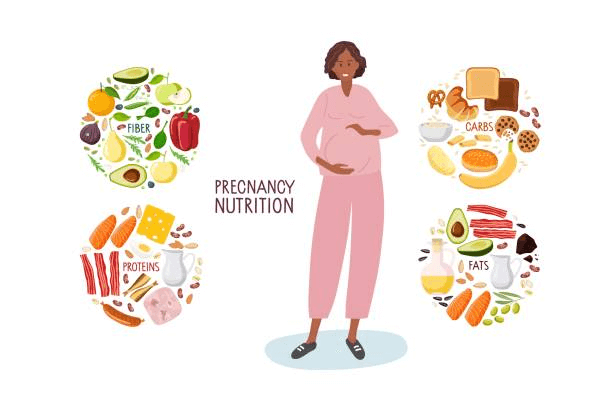Skin Changes During Pregnancy: Comprehensive Guide

Pregnancy brings a multitude of changes to a woman’s body, including the skin. These changes vary widely among individuals, encompassing everything from a radiant glow to new skin conditions. Here’s a detailed look at the common skin changes during pregnancy and how to manage them.
Common Skin Changes During Pregnancy
- Stretch Marks: Causes and Prevention
- Causes: As your body accommodates your growing baby, your skin stretches, potentially leading to stretch marks. About 90% of pregnant women develop these pink or reddish streaks on the abdomen, breasts, and thighs due to the rapid expansion of the skin.
- Prevention: While genetic factors play a significant role, maintaining good skin hydration can help. Regular use of lotions containing vitamin E and alpha-hydroxy acids may provide some benefits, though their effectiveness is not conclusively proven. Fortunately, these marks often fade to silvery lines post-delivery.
2. Linea Nigra
- Description: This is a dark, vertical line that appears on the abdomen. It’s a natural occurrence due to hormonal changes and usually fades after childbirth.
3. Mask of Pregnancy (Melasma or Chloasma)
- Causes: Increased pigmentation caused by hormonal changes leads to dark, splotchy spots on the face, particularly the forehead and cheeks.
- Prevention and Management: Protecting your skin from the sun by wearing sunscreen with at least SPF 30 and using hats can minimize melasma. The condition typically fades post-pregnancy, but if it persists, consult a dermatologist.
Also read: Leg Cramps During Pregnancy: Causes, Prevention, And Treatment
4. Pregnancy Glow
- Causes: Increased blood circulation and hormonal changes cause your face to appear brighter and more radiant.
- Management: If excessive oiliness occurs, use an oil-free cleanser.
5. Acne and Pimple Breakouts
- Causes: Hormonal fluctuations increase oil production, leading to breakouts.
- Management: Maintain a strict cleansing routine using gentle, fragrance-free products. Avoid over-washing to prevent dryness, and consult your healthcare provider before using any acne treatments.
6. Varicose Veins
- Causes: The increased blood volume and pressure on blood vessels can cause these bulging, bluish veins.
- Prevention and Management: Regular walking, avoiding long periods of standing or sitting, elevating your feet, wearing support stockings, and ensuring adequate vitamin C intake can help.
7. Spider Veins
- Causes: These small, reddish veins appear due to increased blood circulation.
- Management: Increase vitamin C intake and avoid crossing your legs. These usually disappear after delivery, but laser treatment can help if they persist.
8. Dry and Itchy Skin
- Causes: Skin stretching, particularly on the abdomen, can lead to dryness and itching.
- Management: Use moisturizers regularly and anti-itch creams like calamine lotion. Severe itching may indicate cholestasis or PUPP, so consult your healthcare provider if symptoms are intense.
9. Skin Tags
- Description: These are small, loose growths of skin that commonly appear under the arms or breasts. They often disappear post-pregnancy, but can be removed if necessary.
10. Darkening of Freckles, Moles, and Other Skin Areas
- Causes: Hormonal changes increase pigmentation, making freckles, moles, nipples, areolas, and labia darker.
- Management: While this change is generally benign, any suspicious changes in moles should be evaluated by a healthcare provider.
Conclusion
Pregnancy-induced skin changes can range from minor annoyances to significant alterations, but most of these conditions are temporary and resolve post-delivery. Maintaining good skincare practices, protecting your skin from the sun, staying hydrated, and consulting healthcare providers for any concerns can help manage these changes effectively.
Sources:
- Mayo Clinic: Skin Changes During Pregnancy
- American Pregnancy Association: Skin Conditions During Pregnancy
- Healthline: Pregnancy Skin Changes
Also read: Natural Ways To Treat Gum Disease During Pregnancy: A Comprehensive Guide






